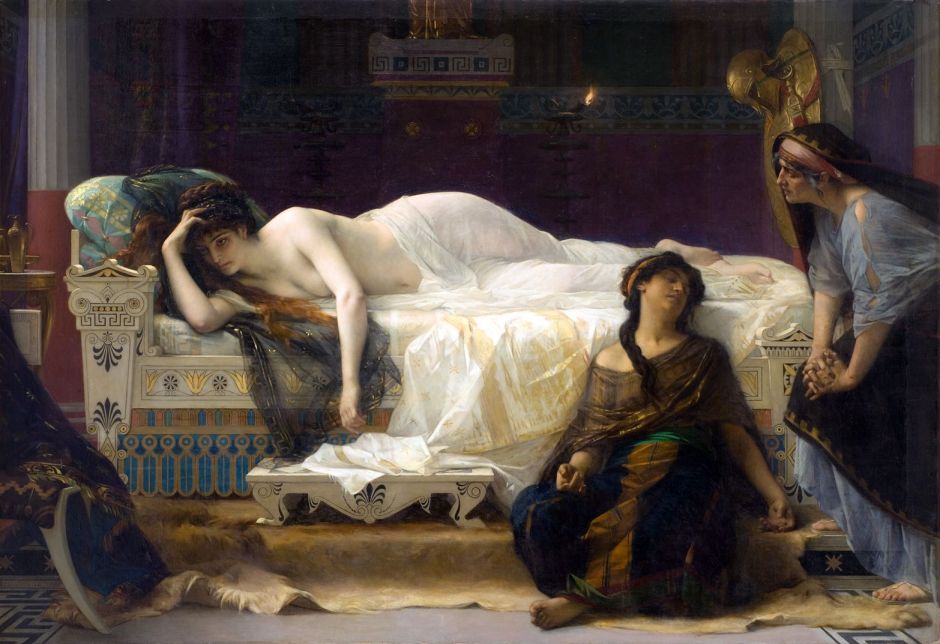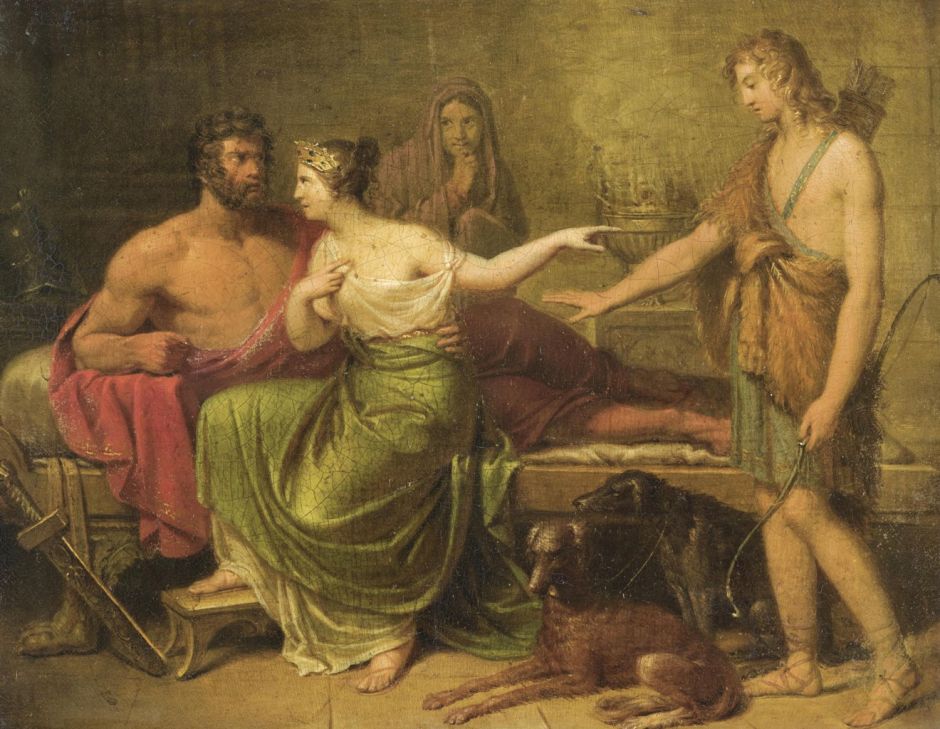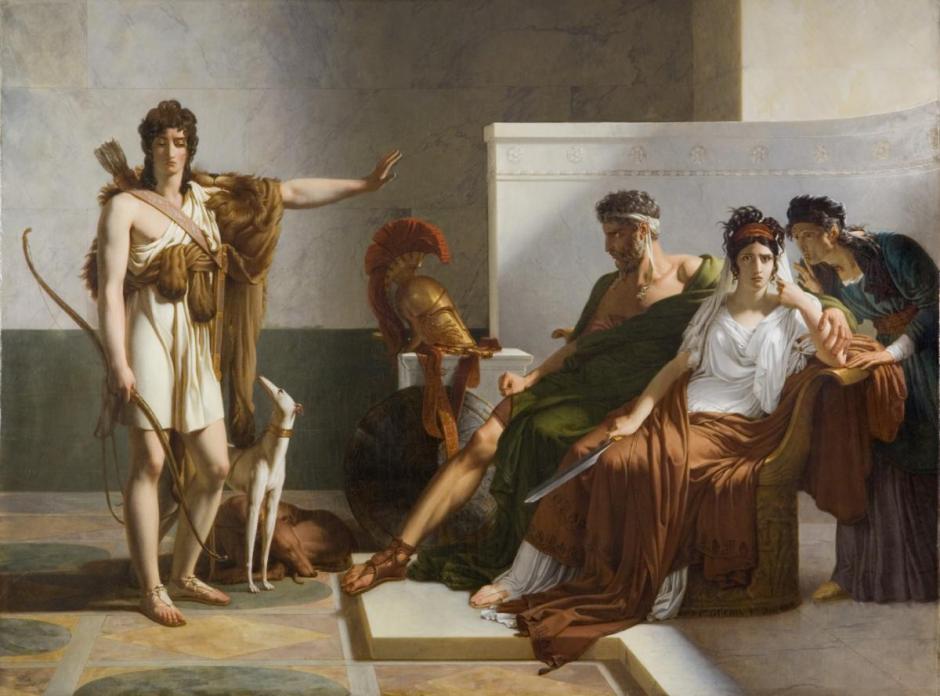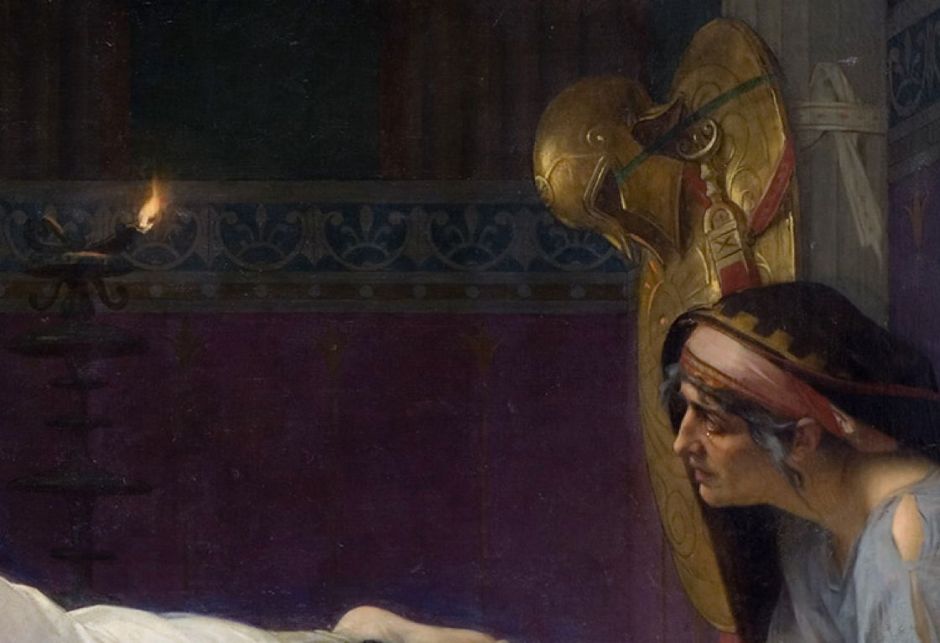The Paris Salon of 1880 was the largest ever held, with well over seven thousand works on display. Despite modern impressions it included an eclectic selection, with paintings by Manet, Monet and Renoir, even though there had already been an Impressionist exhibition throughout April that year. As usual, the critics had spent much of the past year recharging their stocks of vitriol for the occasion, and one painter who they targeted was Alexandre Cabanel (1823-1889), a winner of the Prix de Rome who, at the age of fifty-six, surely deserved better.
Two years earlier he had won his third Grande Médaille d’Honneur of the Salon, was a highly respected professor at the École des Beaux-Arts, and had taught the young Jules Bastien-Lepage among others who were exhibiting there. Maybe there was an element of revenge for the period in the 1860s when he and Bouguereau had driven the Impressionists out of the official Salon into the Salon des Refusés.

Cabanel exhibited his large and recently completed Phaedra, showing a lugubrious young woman spread languidly across a couch. The programme offered the accompanying lines from Euripides’ play Hippolytus: “Consumed with love’s sorrow, Phaedra has locked herself in her palace. A delicate veil covers her head. This is the third day she has gone without food as she is intent on ending her wretched existence.”
Nevertheless, the critics found Cabanel’s painting lacklustre and confusing, considered that showing Phaedra in this weak state was unbefitting, and thought the composition boring. Looking at this painting now, I think it was they who were short of lustre, and had thought only superficially about the subject and this depiction. Phaedra’s story is told by Euripides in that play, from which Racine had written a well-known French play, and which was partially retold by Ovid in the fourth letter in his Heroines. It centres on incest, suicide, and violent death, which could have been controversial themes for the Salon and its critics.
At this time, Phaedra was married to Theseus. He was the son of Aegeus, a primordial king of Athens, and had earlier killed the Minotaur on Crete. He did that with the help of the king of Crete’s daughter Ariadne, who had fallen in love with him; when the couple eloped to the island of Naxos, Theseus had abandoned her there to return to Athens.
Theseus had raped the queen of the Amazons, Hippolyta, and they had a son named Hippolytus. Later, after Hippolyta’s death, Theseus married Ariadne’s younger sister Phaedra, and had two sons by her. When he grew up, Hippolytus became devoted to Artemis and swore chastity in her honour, instead of following Aphrodite, resulting in Aphrodite making Phaedra, his stepmother, fall in love with her stepson.
The marriage of Theseus and Phaedra brought together two houses that seemed blighted. Theseus’ father had committed suicide when he mistakenly thought that his son’s mission to kill the Minotaur had failed, throwing himself into the sea now bearing his name, the Aegean. Theseus was an inveterate adulterer whose life strayed from one sexual adventure to the next. Phaedra’s mother Pasiphaë had been impregnated by a bull and then gave birth to the Minotaur, and her father the king of Crete was murdered by being scalded in a bath.
At the time of these events, Theseus, Phaedra and Hippolytus were in voluntary exile at Troezen, a town to the southwest of Athens, on the opposite side of the Saronic Gulf, where Theseus’ mother Aethra had conceived him after having sex with both her husband Aegeus and Poseidon on the same night. Theseus had exiled himself after murdering a local king and his sons.
As a result of Aphrodite’s wrath with Hippolytus, Phaedra had fallen in love with her stepson, and at first intended to die with her honour intact. It is this scene that Cabanel chose to paint, and this point at which Ovid’s fictional letter in his Heroines would have been written.
Euripides’ play then tells of a plan by Phaedra’s nurse to save her mistress’s life by telling Hippolytus in secret of his stepmother’s love, and suggesting that they consummate the relationship, the same proposal argued in Phaedra’s letter in Heroines. This puts to Hippolytus the suggestion that society was becoming more tolerant of such relationships, and that incest wasn’t so immoral after all.
Hippolytus rejected the proposal in a fury, and threatened to tell Theseus of the situation. Phaedra realised that she had no other option, and hanged herself. But when her body was discovered, no one could explain to Theseus the reason, as all were sworn to secrecy. Theseus then discovered a letter on Phaedra’s body claiming that Hippolytus had raped her.
Theseus called upon his father Poseidon to avenge Phaedra’s death on Hippolytus; because Hippolytus was still bound by his oath of secrecy, he couldn’t defend himself to his father, and was sent into exile. He then travelled off in his chariot, but his horses were spooked by a bull roaring out from the sea in Poseidon’s response to Theseus.

Hippolytus fell from his chariot and was dragged behind it, and lay dying from his wounds, as seen in Lawrence Alma-Tadema’s Death of Hippolytus from 1860.
With Theseus glad that Phaedra had been avenged, Artemis appeared to him and told him the bitter truth, which devastated Theseus. In the last moments of the play, Hippolytus forgives his father, they are reconciled, and Hippolytus dies.

There are alternative accounts, including one version in which Phaedra and Hippolytus survive to the point where they put their cases to Theseus, as shown in this painting by an unknown artist.

Pierre-Narcisse Guérin’s Phaedra and Hippolytus of 1815 also tells that story. An angry Theseus sits beside an alarmed Phaedra, on whose lap is a sword. Whispering secrets into Phaedra’s ear is her old nurse. At the left is Artemis, who holds up her left hand as if to stop Theseus’ thoughts. Theseus must here be angry because of Phaedra’s lie about her rape by Hippolytus, and Artemis must be trying to tell him of Hippolytus’ chastity. Phaedra and her nurse must be discussing the situation, perhaps that Hippolytus has vowed not to reveal who told him of Phaedra’s love for him; the sword on Phaedra’s lap could perhaps be ready for her intended suicide.

Cabanel’s painting cannot tell the whole story, but captures Phaedra’s predicament brilliantly. She is and should be lugubrious, staring into space wondering how she can possibly resolve her love for her stepson. Interestingly, Cabanel’s model for Phaedra was the wife of a well-known banker, who was perhaps well-placed to imagine the emotional turmoil taking place amid such opulent surroundings.

Cabanel also leaves cryptic clues to details. At the opposite side of the painting from Phaedra’s unblinking stare is her tearful nurse, soon to play her role in the tragedy. Behind the nurse, and lit by an oil lamp keeping vigil on the wall, are a helmet, sword and shield. Do they belong to her husband or to her stepson? Do they signify her previous relationship with Theseus, or could they be relics from the future event of the death of Hippolytus?
Cabanel painted his eloquent and faithful account of a story that had been told in words or music by Euripides, Virgil, Ovid, Apollodorus, Seneca, Chaucer (in The Legende of Goode Women of 1385-86), Spenser (in The Faerie Queene of 1590), Ben Jonson (1623), Racine (1676), Jean de la Fontaine (1683), Rameau (1733), Gluck (1745), Voltaire (1775), Schiller (1805), Schubert (1826), Robert Browning (1843), Swinburne (1866), and Massenet (1873). Although several paintings have been made of the death of Hippolytus, Cabanel’s is almost the only one to tell Phaedra’s story.
If only Phaedra had heeded the advice given by the great conductor, Sir Thomas Beecham (1879-1961), who said: “Try everything once except incest and folk dancing.”

